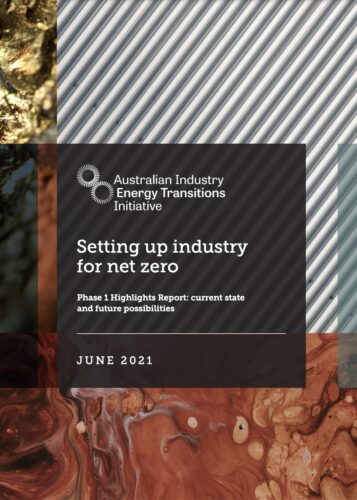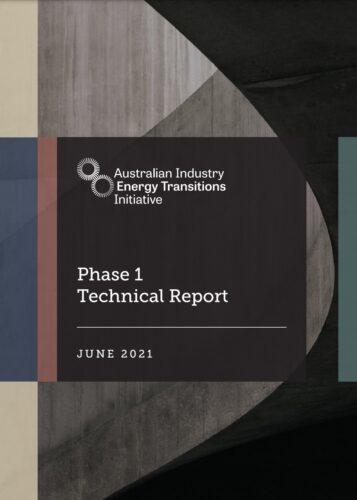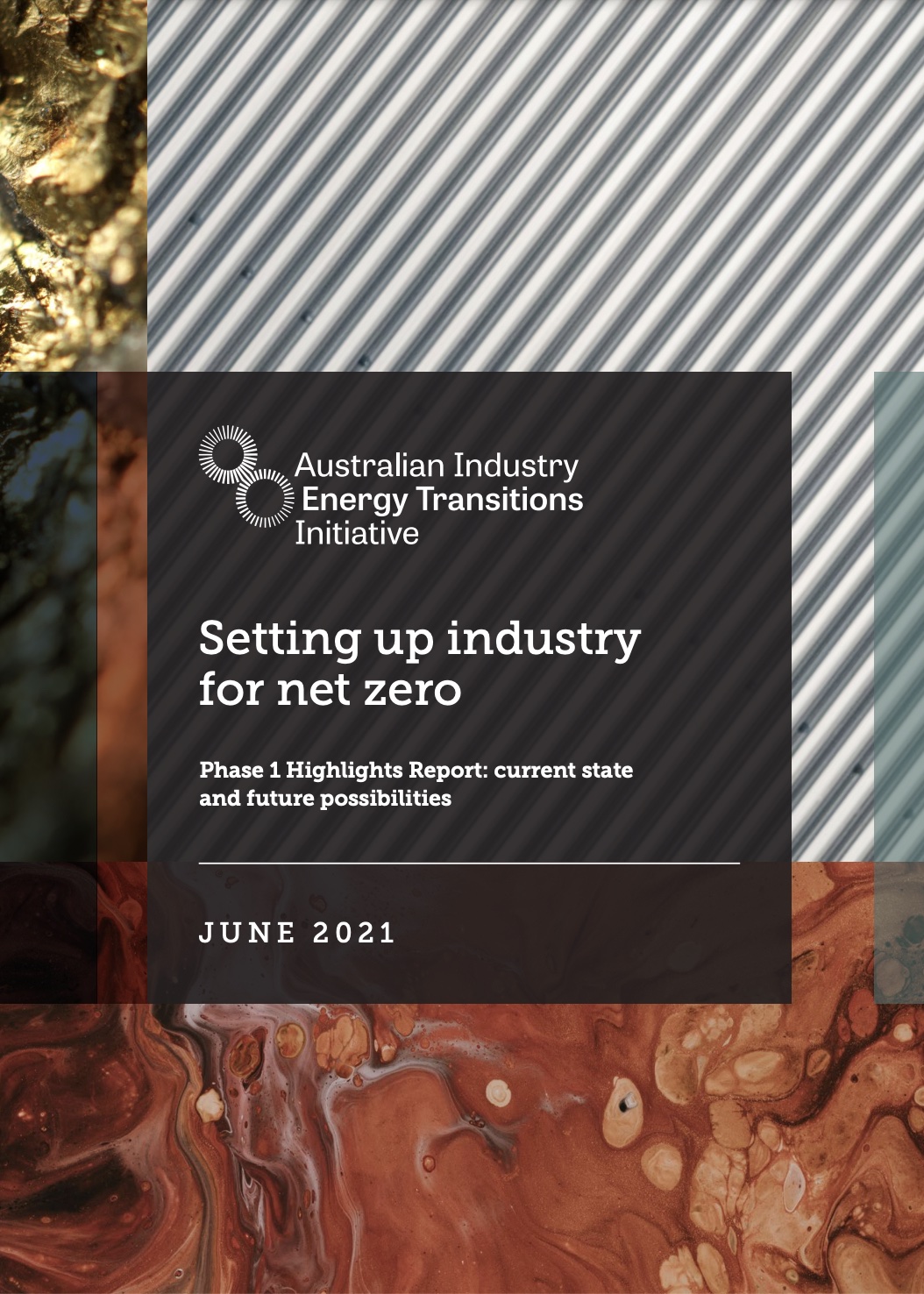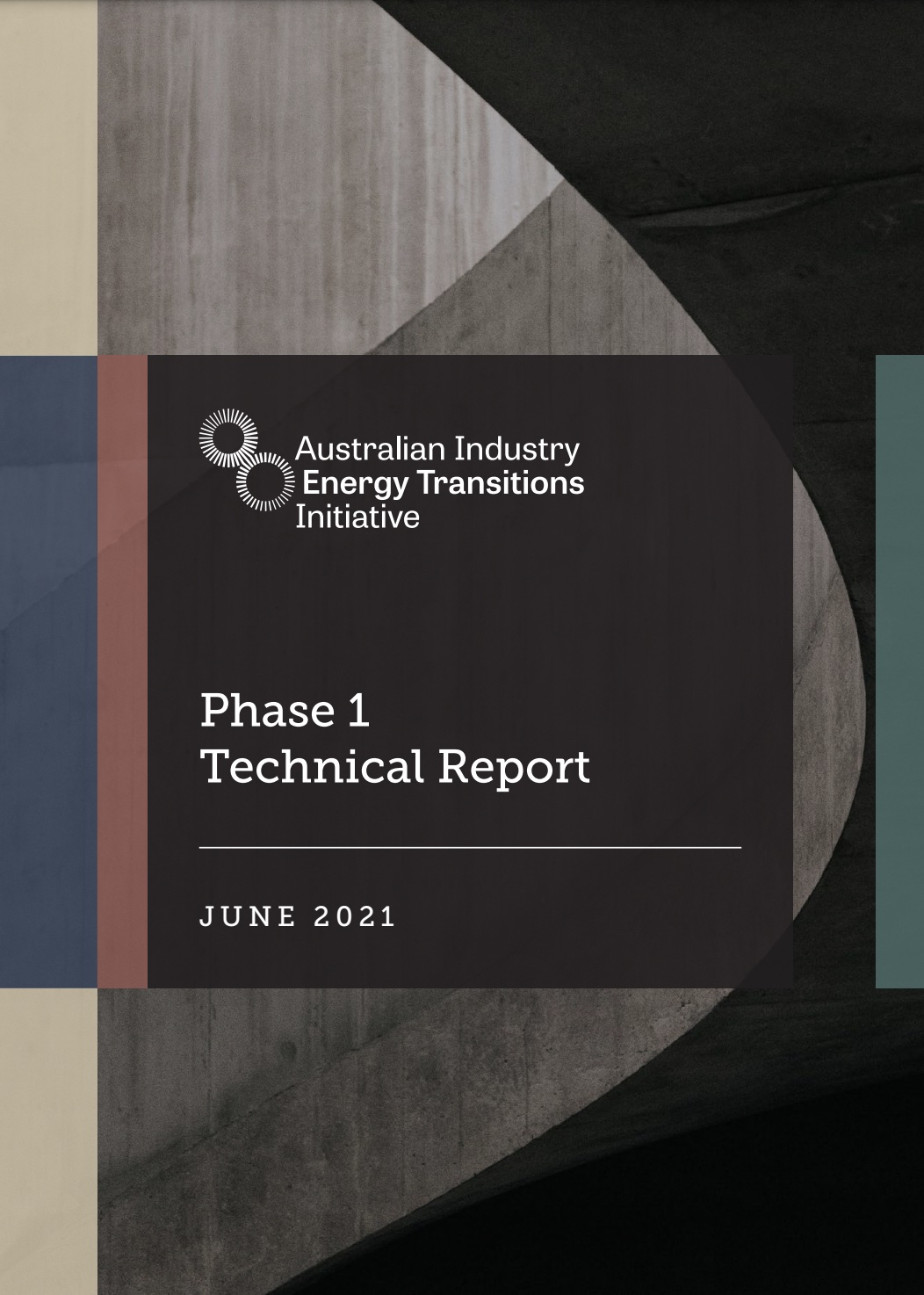Australian Industry Energy Transitions Initiative wraps up first phase, releasing early findings into emissions reduction opportunities across supply chains.
27 June 2021, Melbourne – One year since launch, the first phase of the Australian Industry Energy Transitions Initiative – a platform for Australia’s industry and related businesses to work collectively towards net zero emissions by 2050 – has wrapped up.
The first phase of the initiative explored the current state and future possibilities for transitioning five industry supply chains to net zero – steel, aluminium, liquified natural gas, other metals and chemicals.
Convened by ClimateWorks Australia and Climate-KIC Australia, industry and business leaders from partner organisations came together to discuss opportunities, challenges and joint interests associated with climate change and the net zero transition. The initiative also consulted with over a hundred cross-sectoral stakeholders.
The Phase 1 Highlights Report, Setting up Industry for Net Zero, presents key themes and findings from the first phase of the initiative – providing a collective overview from partners of enablers and blockers for the net zero transition in hard-to-abate sectors.
Some of the collective themes from the first phase of the initiative include:
- Existing and emerging technology solutions can address almost all emissions in the supply chains.
- Australia must capitalise on emerging low-carbon technologies and energy exports, such as green hydrogen and steel, and rapid deployment of existing technology solutions.
- The transition will require significant investment, leadership and transformation of the energy system.
- Access to affordable renewable electricity and economically competitive production of green hydrogen will be crucial.
- Short-term decarbonisation of existing operations and associated infrastructure will be challenging.
The Phase 1 Technical Report provides robust analysis of the transition to net zero in the five supply chains. Research covered current energy use and emissions, promising emissions reduction technologies and deployment at scale, existing potential for renewable energy, and validating findings with industry partners.
Some early technical insights from the analysis include:
- There are several opportunities to reduce industrial emissions which can be categorised under ‘four pillars of decarbonisation’.
- Many of these solutions are mature and already available for commercial deployment.
- Clustered industrial precincts (regions where hard-to-abate sectors are concentrated) will be useful to develop decarbonised energy systems for industry.
- Australian industry has a key role to play in the complex, simultaneous shifts needed in a transition to net zero.
The Australian Industry Energy Transitions Initiative is a platform for Australia’s industry and related businesses to work collectively towards net zero emissions by 2050.
Industry and business partners include Australia Gas Infrastructure Group, APA Group, Aurecon, AustralianSuper, BHP, BlueScope Steel, BP Australia, Cbus, Fortescue Metals Group, Orica, National Australia Bank, Schneider Electric, Wesfarmers Chemicals, Energy & Fertilisers, and Woodside. The initiative’s work has also benefited from the input of other participants including HSBC Australia and Rio Tinto. It is supported by the Australian Industry Group and the Australian Industry Greenhouse Network.
In its next phase, the initiative will develop pathways to net zero emissions and identify potential timing and scale of technology deployment and investment. It will also continue to develop projects and identify priority actions towards net zero emissions industry supply chains.
Read more and access the phase one highlights and technical reports here.








